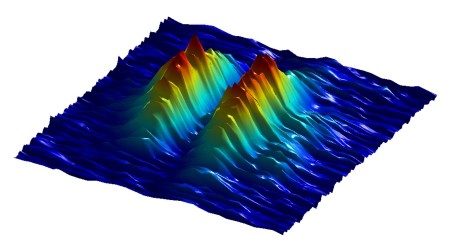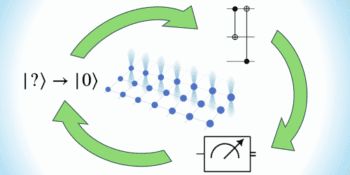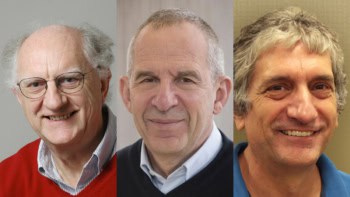Physicists in Israel have witnessed the Josephson effect — traditionally the coherent flow of electrons through an insulator sandwiched between superconductors — in an ultracold atomic gas. This new example of the effect could be exploited to make an accurate rotation sensor, or even provide a “chemical potential” standard for calibrating the energy of devices such as lasers (Nature 449 579).

Quantum mechanics allows all electrons the possibility of tunnelling through insulating barriers, but electrons in superconductors — which behave as one collective entity — can tunnel coherently. This means that a current can flow across a barrier without a driving voltage, a phenomenon known as the d.c. Josephson effect. Moreover, the a.c. Josephson effect says that if a voltage is applied across the barrier the current will oscillate in direction. This oscillation has been used in superconducting quantum interference devices (SQUIDs) to measure tiny magnetic fields, as well as being used to define the volt.
Although the a.c. Josephson effect has also been seen in superfluid helium as a mass-current oscillation of atoms when separated by a membrane, the d.c. Josephson effect had only been seen in superconductors. Now, however, Jeff Steinhauer and colleagues from the Israel Institute of Technology have seen both the a.c. and d.c. Josephson effects in a gas of rubidium atoms cooled to almost absolute zero. At this temperature the atoms all fall into the same ground state, what is known as a Bose-Einstein condensate (BEC).
The researchers trapped their BEC using magnetic fields and then divided it in two with a laser beam, which provides a potential barrier in the same way that an insulator does for electrons. They then shifted the beam through the BEC to drive the atoms on one side closer together against their mutual repulsion, increasing their chemical potential. By monitoring the density of each side of the BEC, Steinhauer and colleagues found that it wasn’t just the compacted atoms that tunnelled through, but that atoms from both sides tunnelled back and forth — the hallmark of the a.c. Josephson effect. To see the d.c. Josephson effect, they shifted the beam at less than 40 µm/s and found the atoms passed through unimpeded and with no oscillation.
Because the oscillations of the a.c. Josephson effect are strongly dependent on the difference of the chemical potential between the sides of the BEC, they are also dependent on the position of the beam. Steinhauer and colleagues therefore think that, analogous to how a SQUID detects magnetic fields, they could use the movement of the beam as a rotation sensor. And, like the superconducting Josephson effect, they think that their system could provide a standard chemical potential for calibration purposes. For example, if a laser were shone onto one side of the BEC, it would increase that side’s chemical potential and thus change the frequency of the oscillation proportionally to its beam energy.



